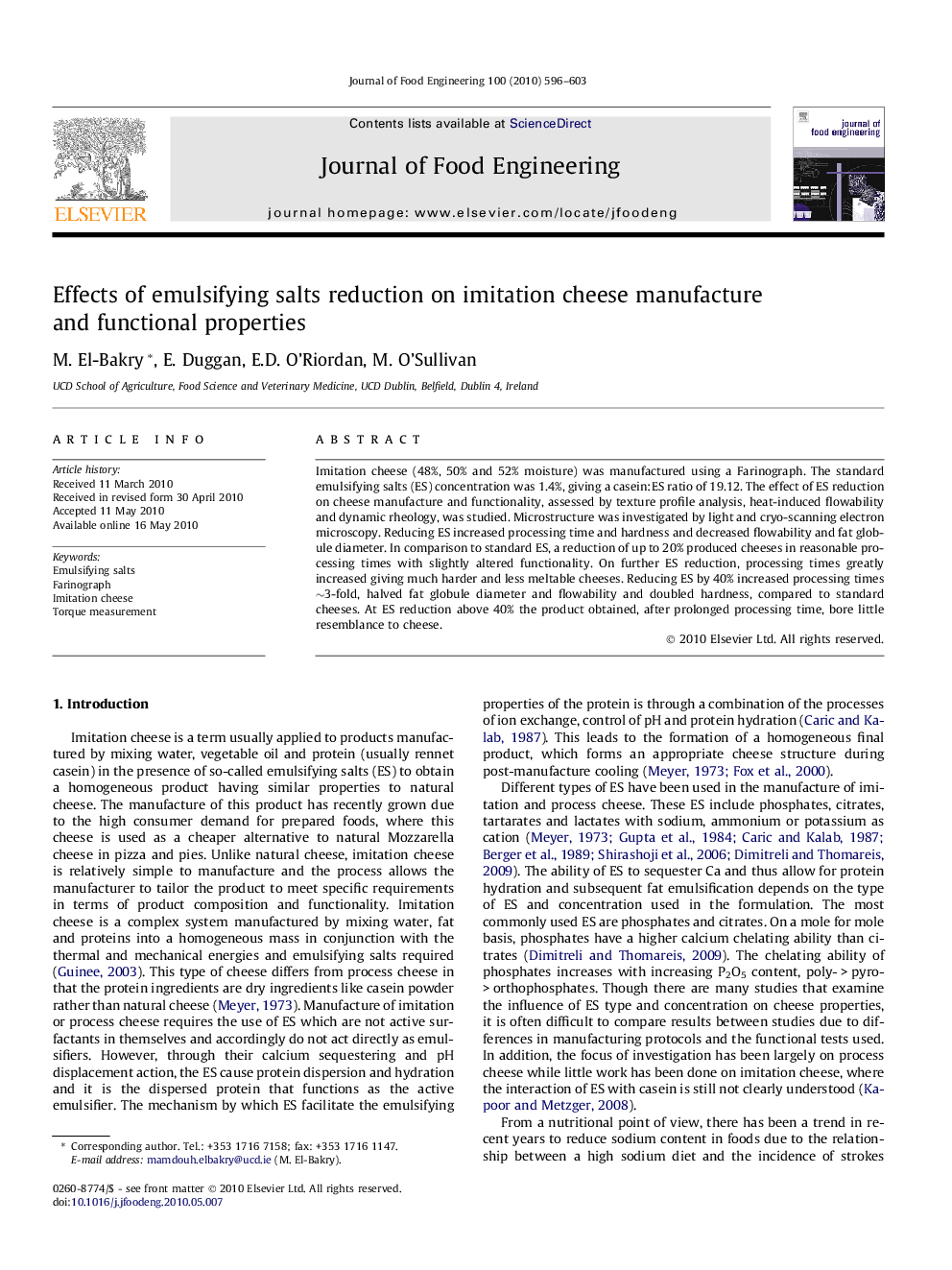| Article ID | Journal | Published Year | Pages | File Type |
|---|---|---|---|---|
| 224268 | Journal of Food Engineering | 2010 | 8 Pages |
Imitation cheese (48%, 50% and 52% moisture) was manufactured using a Farinograph. The standard emulsifying salts (ES) concentration was 1.4%, giving a casein:ES ratio of 19:12. The effect of ES reduction on cheese manufacture and functionality, assessed by texture profile analysis, heat-induced flowability and dynamic rheology, was studied. Microstructure was investigated by light and cryo-scanning electron microscopy. Reducing ES increased processing time and hardness and decreased flowability and fat globule diameter. In comparison to standard ES, a reduction of up to 20% produced cheeses in reasonable processing times with slightly altered functionality. On further ES reduction, processing times greatly increased giving much harder and less meltable cheeses. Reducing ES by 40% increased processing times ∼3-fold, halved fat globule diameter and flowability and doubled hardness, compared to standard cheeses. At ES reduction above 40% the product obtained, after prolonged processing time, bore little resemblance to cheese.
